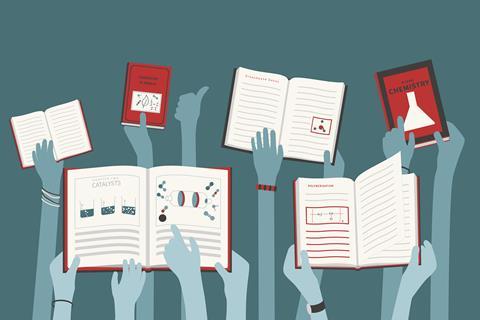Build your students’ confidence with these simple, teacher-tested approaches to literacy skills

Reading scientific texts is a great way to increase students’ literacy skills. It can also give students new contexts for existing knowledge. However, finding appropriate texts and using them in a meaningful way is not easy.
Engaging students with scientific writing isn’t about asking them to read long research papers. Rather it is about getting them to engage with scientific writing which excites and interests them, and ensuring that they really understand the meaning behind what they have read. You can choose from many different strategies to encourage engagement, but first you need to find something suitable for students to read.
Finding texts (and questions)
Textbooks are probably the easiest text for students to access and they have the added bonus that most already contain questions related to the text right there on the page to engage students with the writing. Textbooks are a hugely underused resource, often being relegated to cover lessons. However, not only can they provide a fresh perspective on what you are teaching, they also provide the opportunity to stretch and challenge students. My top set year 10 loved reading about respiratory surfaces from a set of old A-level biology textbooks. It gave brilliant context to the topic and really tested their understanding.
Online articles aimed at students are another great resource and they often come with classroom-ready activities. EiC has several comprehension activities where you can download an article and questions for use in the classroom such as this one on the town of Ytterby and its importance in chemistry. Another site I really like is the Science Journal for Kids, which is updated every week with a new article aimed specifically at teenagers. You can search for articles by area of interest or by reading age and every article comes with a series of questions and answers. Finally, the Science News for Students site is updated daily and every article contains a glossary of keywords. This site also has a series of articles with questions; find them under Analyze This.
More resources
Find more resources and ideas to support students’ literacy in our Literacy in science teaching collection.
Creating text-based activities
What about the articles you find elsewhere, or extracts from popular science books you might want to share? Using these often means creating tasks to accompany them. So how can you do this and get students to engage in a text in a meaningful way?
Ask students to take part in a fact-finding mission within the article. Use questions such as who said, how many, etc, to ensure they have read the article. The next level up is to ask students to use information in the article to check their understanding and to apply something they have just read. For example, ask them to look up the definitions of keywords and then ask a question, or find an exam question where they need to use that keyword in a sentence.
You can also ask students to manipulate data from an article. Although not a literacy skill, this is really important for examinations. For example, from an article on e-cigarettes I asked students to calculate the number of people developing lung disease using the percentages stated in the article.
Want more?
Want more articles like this, direct to your inbox? Make sure you’ve subscribed to our email alert.
Lastly, ask students to generate new content using the text. One of the most powerful activities is to ask your students to summarise an article in a really short paragraph (I often limit them to half a page of A4). This really ensures that students have read the article in its entirety and also that they have really understood the content.
Making time
So how do you fit this in to an already crowded curriculum? Shorter texts (those taking only a minute or two to read) and textbooks can be easily added into a lesson and short articles make a great starter or plenary activity to engage students and provide context for a lesson. Once students are confident using texts in class, you can then start exposing them to longer articles as homework activities. Slowly increase the length of articles as students get older, working up to about 1000 words for 16-year olds.
These relatively simple activities have given my students access to a large range of texts they otherwise wouldn’t have seen and hopefully helped to build their confidence when it comes to approaching scientific texts.














No comments yet